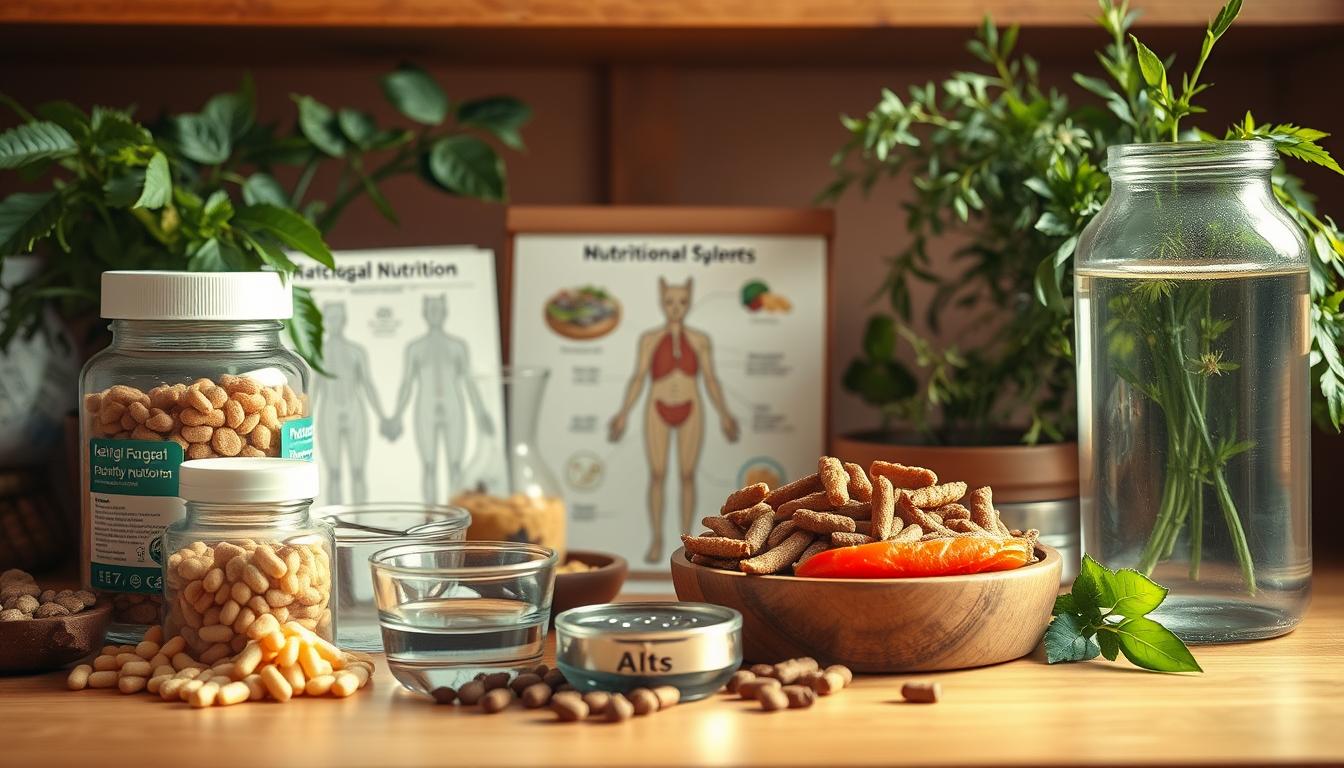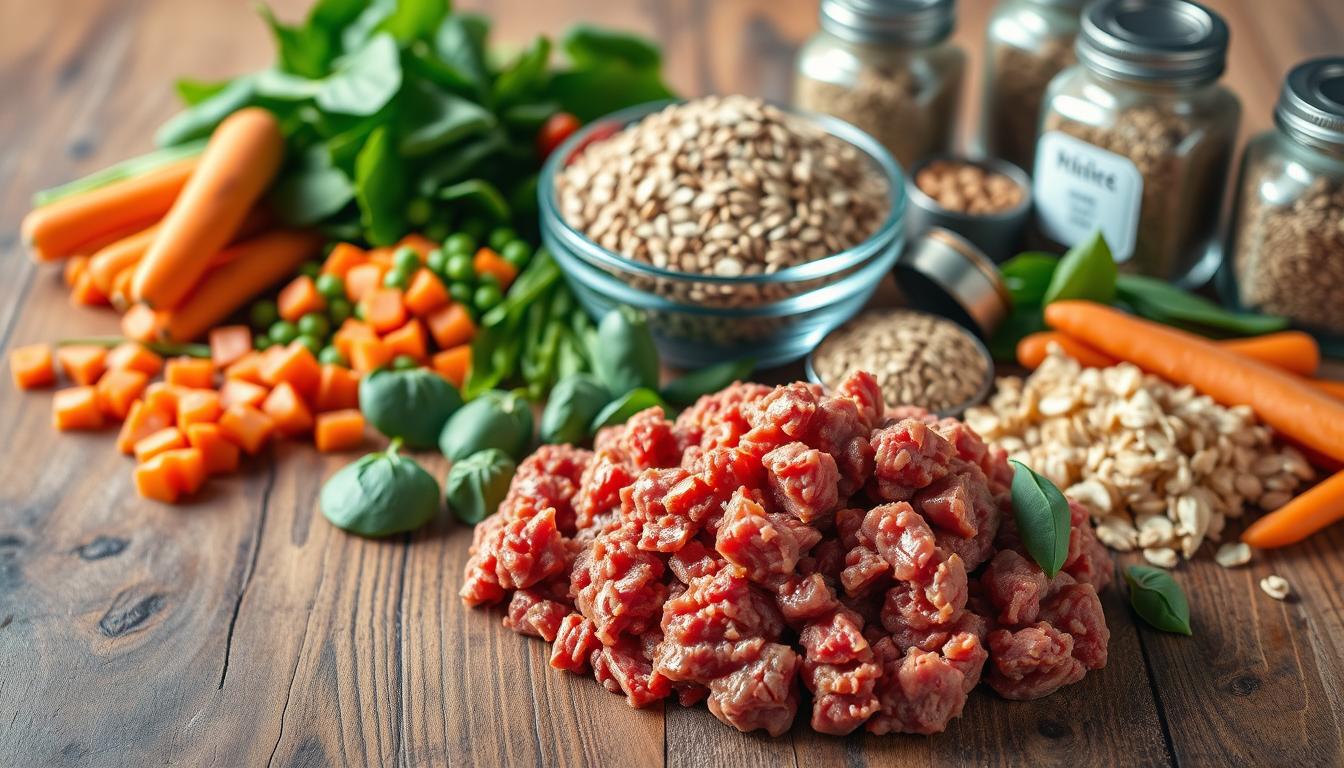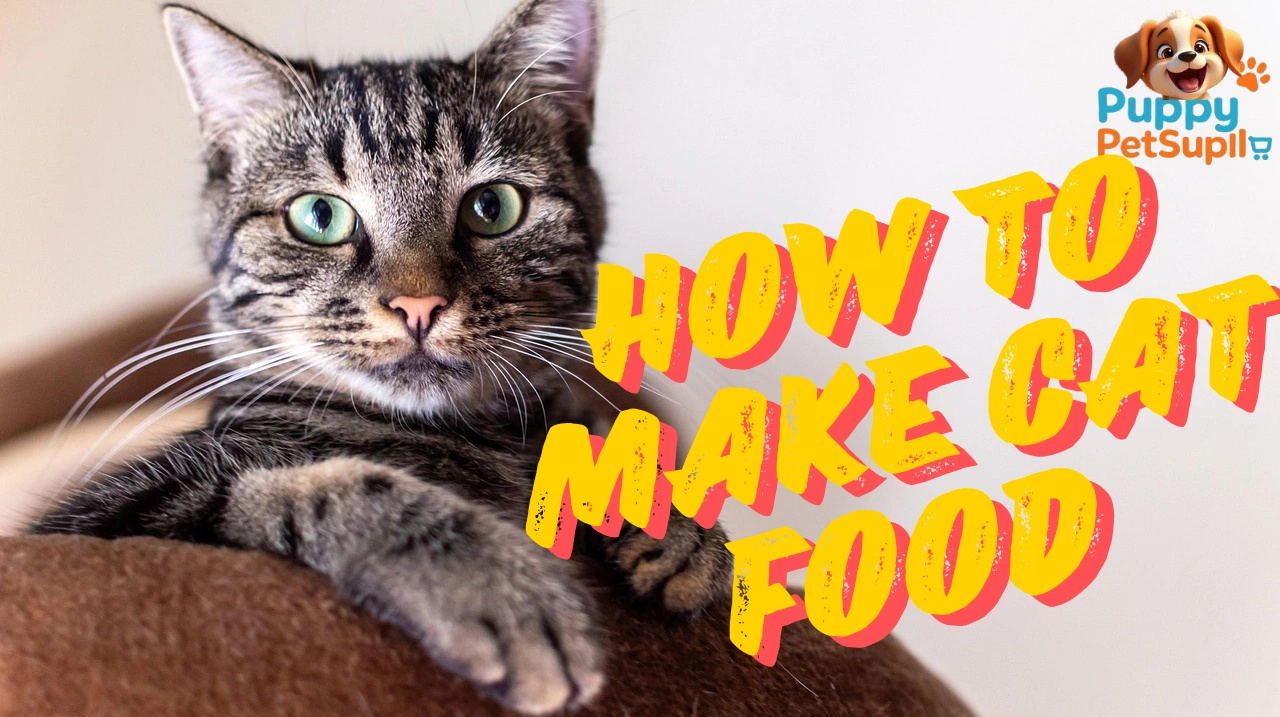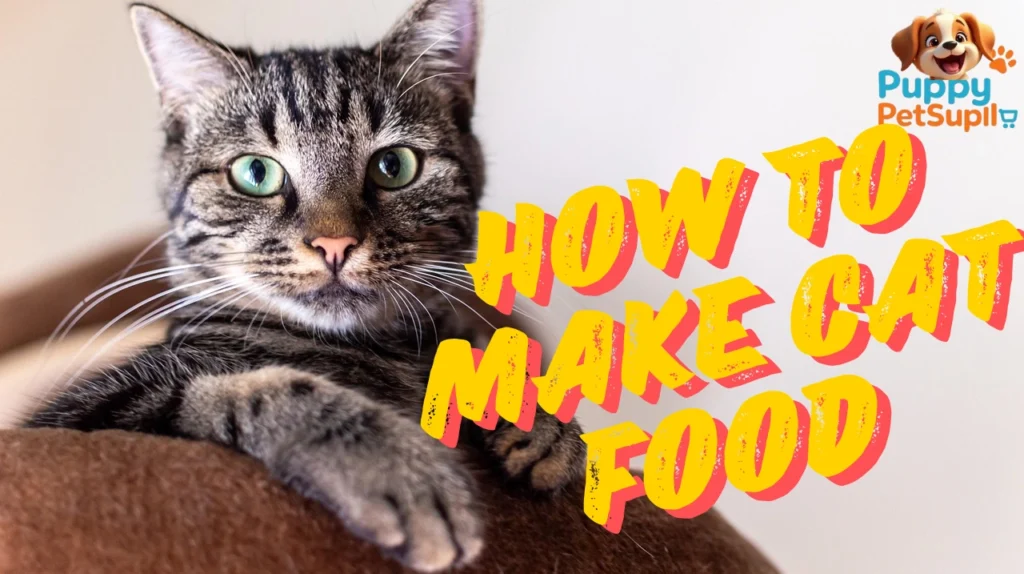Healthy Cat Food make: A Step-by-Step Guide
Cats are meat-eaters by nature, and sadly, 40% of cats are overweight. Making your own homemade cat food can greatly improve their health.

How to make cat food
When you make DIY cat food, you pick what goes into it. This means your cat gets the right stuff like taurine, omega-3s, and vitamins. This guide will show you how, with feline nutrition tips and easy recipes.
Key Takeaways
- Understand the nutritional needs of your cat.
- Learn simple recipes for healthy homemade cat food.
- Discover the benefits of controlling ingredients in your cat’s diet.
- Get tips on ensuring nutritional balance in homemade cat food.
- Explore the advantages of DIY cat food over commercial options.
Benefits of Making Your Own Cat Food
Preparing your cat’s meals at home can greatly improve their health. You can ensure they get the nutrients they need without harmful additives found in commercial foods.
Health Advantages for Your Feline Friend
Customizing your cat’s diet at home helps avoid fillers and artificial additives. This can lead to improved overall health, better digestion, and a lower risk of allergies. Homemade food can also help manage your cat’s weight and improve their coat.
Some key health benefits of homemade cat food include:
- Improved nutrient intake
- Reduced risk of food allergies
- Better weight management
- Healthier coat and skin

healthy homemade cat food
Cost Effectiveness of Homemade Cat Food
While starting might seem expensive, homemade cat food can save money in the long run. Buying ingredients in bulk and preparing meals ahead can cut costs compared to premium commercial foods.
| Aspect | Commercial Cat Food | Homemade Cat Food |
| Cost per Month | $50-$75 | $30-$50 |
| Customization | Limited | High |
| Nutritional Control | Variable | High |
By making your own cat food, you improve their health and may save money on cat food over time.
Understanding Your Cat’s Nutritional Needs
It’s key to give your cat the right food to keep them healthy and avoid sickness. Cats must eat a lot of protein from animal sources. This is because they are obligate carnivores. They need specific nutrients to stay healthy.
Essential Nutrients for Cats
Cats need certain nutrients for their health. These include:
- Protein: Cats need a lot of protein from animal sources like chicken, fish, or beef.
- Taurine: An amino acid found in animal-based protein sources, it’s key for heart health and vision.
- Vitamin A: Important for vision, immune function, and skin health.
- Arachidonic Acid: An omega-6 fatty acid that supports skin and coat health.
These nutrients are vital for your cat’s health. A lack of any of these can cause health problems.

cat nutrition
Common Nutritional Deficiencies to Avoid
Nutritional deficiencies can cause health issues in cats. Some common ones include:
| Nutrient | Deficiency Symptoms |
| Protein | Weight loss, poor coat condition |
| Taurine | Heart disease, vision problems |
| Vitamin A | Night blindness, skin problems |
Special Dietary Considerations
Some cats need special diets because of health issues or age. Kittens need more protein and calories than adult cats. Older cats may need fewer calories but more joint support. Cats with health problems like kidney disease may need a diet low in protein or phosphorus.
Knowing these special needs is important for your cat’s care. Always talk to a vet to find the best diet for your cat’s needs.
How to Make Cat Food: Essential Ingredients and Equipment
To make healthy homemade cat food, you need the right ingredients and tools. It’s rewarding to feed your cat good food without additives. This way, your cat gets the nutrients they need.
Must-Have Ingredients for Balanced Cat Nutrition
A good homemade cat food has quality protein, vitamins, and minerals. Protein sources like chicken, salmon, or beef are key. Adding supplements like vitamin E and omega-3 fatty acids is also important.
- High-quality protein sources (chicken, salmon, beef)
- Vitamin E supplements
- Omega-3 fatty acids
- Fresh vegetables (optional)
Always talk to a vet to find the best diet for your cat. This depends on their age, health, and lifestyle.
Kitchen Tools You’ll Need
Right tools make making cat food easier. You’ll need a food processor to grind ingredients. Also, cooking utensils and storage containers to keep food fresh.
- Food processor or grinder
- Cooking pots and pans
- Measuring cups and spoons
- Storage containers

homemade cat food ingredients
Ingredients to Avoid in Homemade Cat Food
Knowing what not to use is as important as what to use. Avoid onions, garlic, and chocolate as they are toxic. Also, skip low-quality or processed ingredients that harm your cat’s health.
- Onions and garlic
- Chocolate
- Low-quality meat by-products
- Certain raw or undercooked foods that may contain bacteria
Always check with a vet before changing your cat’s diet.
Step-by-Step Cat Food Preparation Guide
Making healthy cat food is simpler than you might think. Our guide shows you how. By making your cat’s food, you can pick the ingredients. This ensures your cat gets the nutrients they need.
Raw Cat Food Recipe
A raw diet is good for cats, as it’s like their natural food. To make raw cat food, mix protein like chicken or fish with other important nutrients.
Here’s a basic raw cat food recipe:
- 1 pound of raw chicken or fish
- 1/2 cup of finely chopped organs (liver, kidney)
- 1/4 cup of finely chopped bone
- 1 teaspoon of fish oil
- 1 teaspoon of flaxseed oil
Cooked Cat Food Options
Cooked food is a better choice for some cats than raw. Use chicken, sweet potatoes, and green beans to make cooked food.
Here’s a simple cooked cat food recipe:
- 1 pound of cooked chicken
- 1/2 cup of cooked sweet potatoes
- 1/4 cup of steamed green beans
- 1 teaspoon of salmon oil
Mix everything together and serve.
Mixing and Portioning Your Homemade Cat Food
It’s important to mix and portion your cat’s food right. This ensures they get a balanced diet. Divide the food into portions and store them in airtight containers.
Storage and Serving Recommendations
Keeping your homemade cat food fresh and safe is key. Use airtight containers in the fridge or freezer.
Proper Storage Techniques
Store your homemade cat food in airtight containers. Keep them in the fridge or freezer. Always label them with the date and what’s inside.
Transitioning Your Cat to Homemade Food
When switching to homemade food, do it slowly. Start by mixing a little homemade food with their old diet. Gradually add more homemade food over time.
Conclusion
We’ve looked at the many benefits of making homemade cat food. These include better health and saving money. We’ve also talked about the key nutrients cats need and how to pick the right ingredients.
Now, we’re ending this guide. We urge you to start making your cat’s food healthier. With our tips, you can choose the best food for your cat.
By making your cat’s food, you ensure they get the best start. Our guide has given you the advice you need. Start making homemade cat food today and help your cat stay healthy.
FAQ
Making homemade cat food lets us pick the ingredients. This ensures our cats get the nutrients they need. It also helps avoid unhealthy additives, which can improve their health and lower vet bills.
To make sure our cat food is balanced, we need to include key nutrients like protein, taurine, and vitamins. Getting help from a vet or a certified animal nutritionist can help us create a balanced diet for our cats.
Common issues in homemade cat food include not enough protein, taurine, and essential vitamins and minerals. We should know about these and take steps to fix them in our recipes.
Yes, we can make cat food tailored for cats with health issues like kidney disease or food allergies. It’s important to talk to a vet to find the right ingredients and recipes for our cat’s needs.
Key ingredients for balanced cat nutrition include high-quality proteins like chicken, salmon, or beef. We also need supplements like omega-3 fatty acids and vitamins. Choosing ingredients that are nutrient-rich and easy to digest is important.
We should keep homemade cat food in airtight containers in the fridge or freezer to keep it fresh. When serving, thaw frozen food properly and mix it well to ensure all ingredients are evenly distributed.
To switch to homemade food, start by mixing a little homemade food with their current diet. Gradually increase the homemade food portion over time. This helps prevent digestive upset and lets our cat get used to the new food.
Yes, avoid onions, garlic, chocolate, and grapes in homemade cat food as they are toxic to cats. Also, steer clear of low-quality ingredients or fillers that don’t offer much nutritional value.
Yes, making raw cat food at home is possible. But, it’s critical to handle raw meat safely to avoid contamination. Always consult with a vet or a certified animal nutritionist to ensure the recipe is balanced and safe for our cat.
Homemade cat food can save money in the long run. Buying ingredients in bulk and avoiding commercial cat food markups can help. But, the initial cost of ingredients and equipment might be higher.

